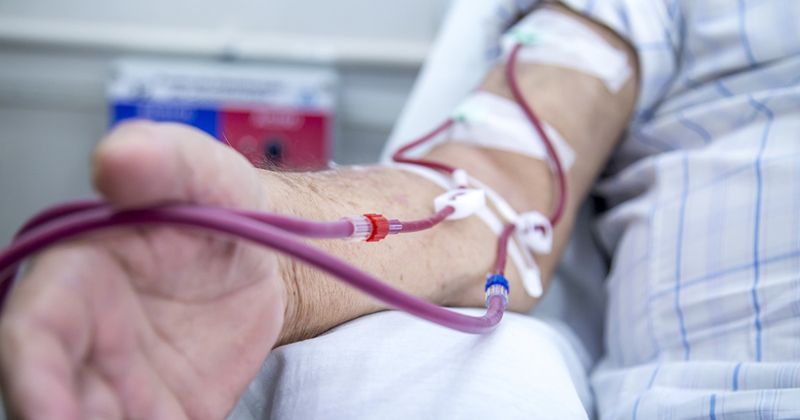Few patients eligible for twice-weekly dialysis during COVID-19 pandemic
Although reducing the number of hemodialysis sessions attended each week may limit COVID-19 transmission, most patients were deemed ineligible for twice-weekly treatments, suggesting alternative strategies should be explored.
According to David A. Clark, MD, of Dalhousie University in Nova Scotia, and colleagues, although patients with kidney failure are a uniquely “vulnerable” population, it is challenging for these individuals to self-isolate as in-center hemodialysis requires contact with transportation workers, other patients and members of the health care team.

“As part of contingency planning for lowering coronavirus transmission and/or the potential scenario of fixed/reduced resources during the COVID-19 pandemic, the strategy of reducing hemodialysis treatments from three times weekly to twice-weekly has received international attention,” the researchers wrote. “A twice-weekly hemodialysis strategy extrapolates from research efforts evaluating incremental hemodialysis, including prior observational studies from the United States and China. These studies concluded a twice-weekly hemodialysis prescription as non-inferior to thrice-weekly treatment in select patients with preserved residual kidney function, minimal interdialytic weight gain, and without hyperkalemia or marked comorbidity.”
To evaluate this strategy, researchers conducted a “rapid systematic review” of 473 patients who received hemodialysis treatments at least three times per week and determined which patients were eligible for twice-weekly treatments by applying selection criteria. Criteria for eligibility included interdialytic fluid gain of less than 2.5 kg, serum potassium of less than 5.5 mEq/L, good nutritional status, no clinical evidence of fluid overload (24-hour urine volume greater than 600 mL per day), infrequent hospitalization or “easily manageable” comorbid conditions (eg, cardiovascular and pulmonary) and adequate residual renal urea clearance (greater than 3 mL/min/1.73m2).
Of the total number of patients assessed, researchers determined 4% were eligible for twice-weekly hemodialysis.
“Recognizing that the inclusion criteria for twice-weekly hemodialysis eligibility were adapted into our stepwise approach and re-purposed for contingency planning, if criteria for residual kidney function were relaxed, eligibility for twice-weekly hemodialysis would be higher, approximating 40% of patients,” the researchers wrote. “Of note, these patients still met inclusion criteria addressing hypervolemia, hyperkalemia, and multimorbidity, all major issues of concern for patients reducing from thrice to twice-weekly hemodialysis in a recently published counterpoint paper arguing against the use of twice-weekly hemodialysis in times of dialysis unit stress.”
Despite this, Clark and colleagues contended evidence on twice-weekly treatments is still limited and therefore conclude the strategy only be used as a “last resort.”
“As future adversity resulting in dialysis unit stress is inevitable (ie, natural disasters) we suggest that our rapid assessment approach be validated across other centers to inform the applicability of this contingency option,” they wrote.









